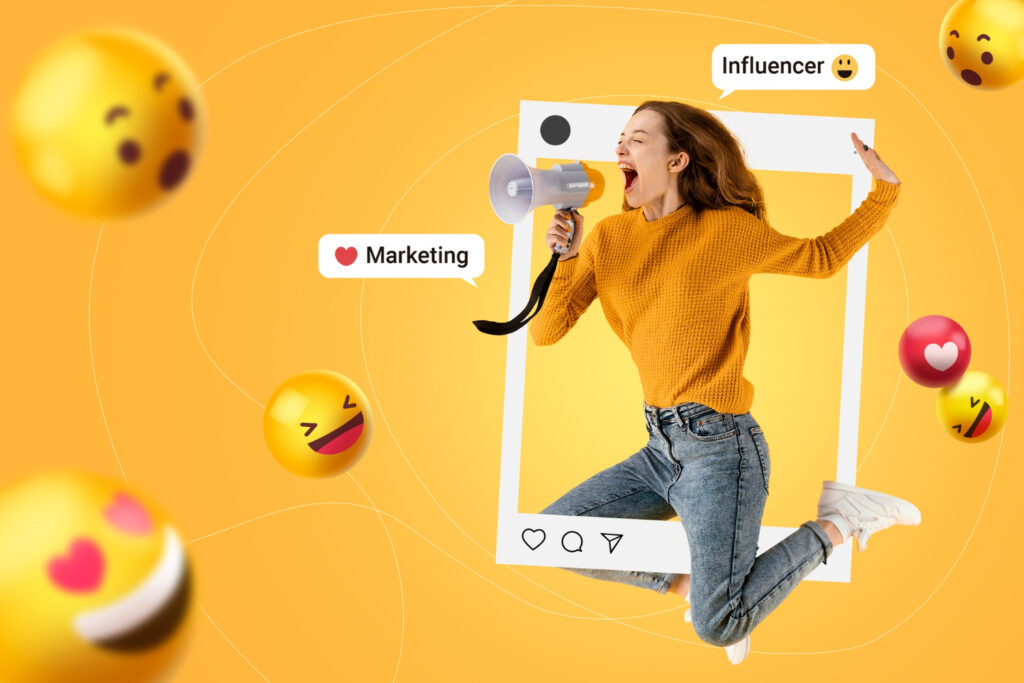As the world continues to transition their lives online, it’s important to explore all marketing strategies available to maximize your brand’s outreach. Influencer marketing is a great way to reach potential consumers, and it’s something more and more brands are taking advantage of every year. In fact, as of 2023, influencer marketing has grown to $21.1 billion.
So, what is influencer marketing and how do you ensure that your brand is doing it effectively?
What is an Influencer?
An influencer is someone who has grown a sizeable following on social media, particularly Instagram or TikTok. They post curated content pertaining to a particular interest, for instance, vegan cooking or makeup, and their followers look to them as an expert within their chosen niche.
What sets them apart from traditional celebrities are a few key things. Most importantly, their followers are not referred to as a “fanbase”, but rather as a “community.” In addition, an influencer’s community trusts them because they feel like they have built a transparent and authentic rapport with the influencer. Also, the influencer is not above their community, but rather are seen as a member of their community themselves.
Commonly Used Terms
Before jumping into how influencer marketing works, there are a few key terms that you need to know:
Nano-influencers: less than 10,000 followers
Micro-influencers: 10,000 to 100,000 followers
Macro-influencers: 100,000 to 1 million followers
Mega influencers: greater than 1 million followers
Now these numbers can vary depending on who you talk to, so keep in mind that these ranges are based on averages and are not a hard and fast rule. But these are terms you will still hear a lot and need to be familiar with.
Finding the Right Influencer
The first thing you need to do is consider what size influencer would best represent your brand. Mega influencers, while tempting, charge the most while having the lowest community engagement per post. Plus, their demographics are usually so varied that it can be hard to curate content for such a large audience.
Look instead at the rates of community engagement that an influencer sees per post. What you’ll find is that nano and micro influencers are far more successful in keeping their communities engaged. They also charge far less per post. According to sproutsocial, micro-influencers have a 60% higher engagement rate than macro influencers and can drive 20% more conversions for your brand.
The next step is to research what kinds of content they post. Does your branding align with that of the influencer? What are their community demographics? What kind of voice do they use when speaking to their community? Do they come across authentically? What controversies, if any, have they had in the past? Remember, this person is representing your brand, so it is important to choose carefully.
Finally, research their experience working with brands. If they don’t have any experience that’s not a red flag. What you’re looking for is if they have had any negative experience. What happened that caused it to be negative and does that mean that it would be best for you to partner with someone else?
Briefs, Goals and Management
When working with influencers it is important to set clear expectations. Remember, these are individual people often with limited to no marketing experience, not companies with marketing teams.
Construct your briefs carefully and make sure that they are crystal clear. Define clear goals and how you will be measuring success. Be sure to decide on messaging and your expectations for the campaign without restricting the influencer’s creative freedom. Be up front when defining the timeline and deliverables as well as the payment.
For Your Brand
Moving forward if influencer marketing is something your company wants to use regularly, then it would be best to establish influencer outreach and how to contact influencers. Create a successful influencer marketing strategy for your brand and review and refine your strategy on a regular basis.
Many companies are now putting together teams exclusively dedicated to influencer marketing, as well as dedicating portions of their budget to influencer marketing. This will ease the workflow needed to find the best influencers to partner with and will help ensure that your campaigns are successful.
Lauren Schwartz | Contributing Writer




